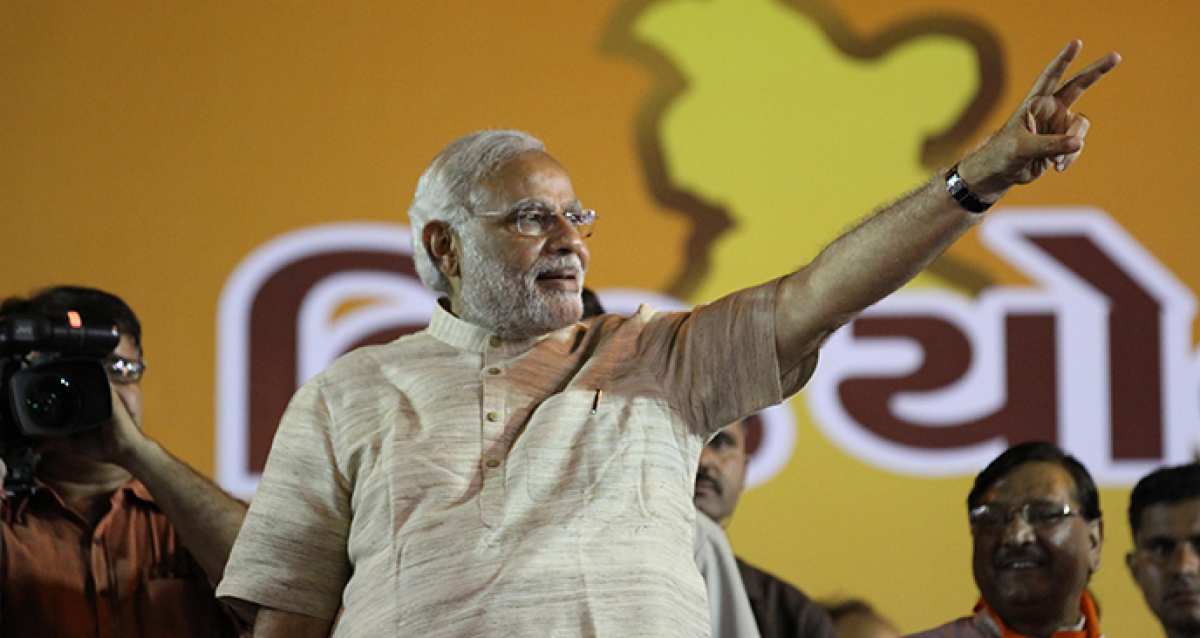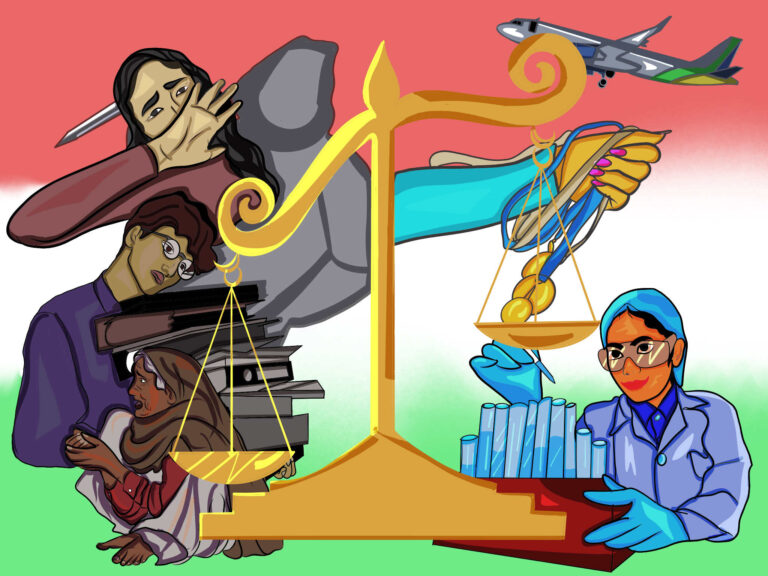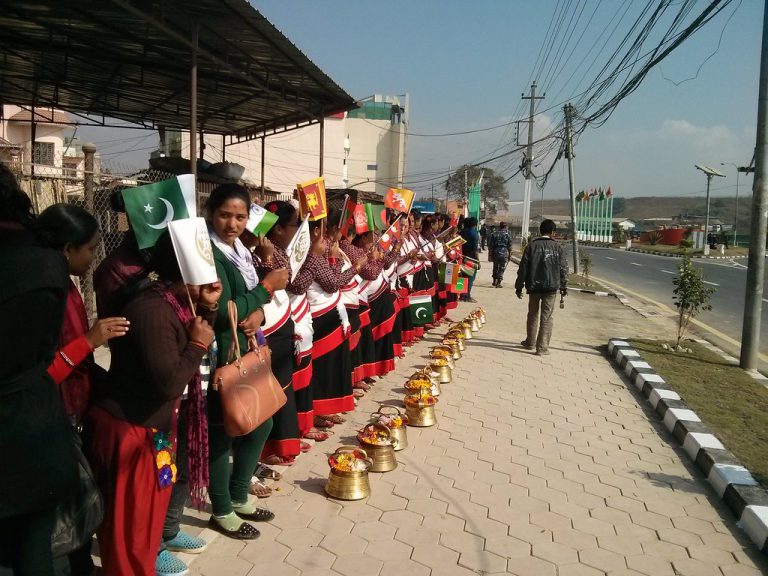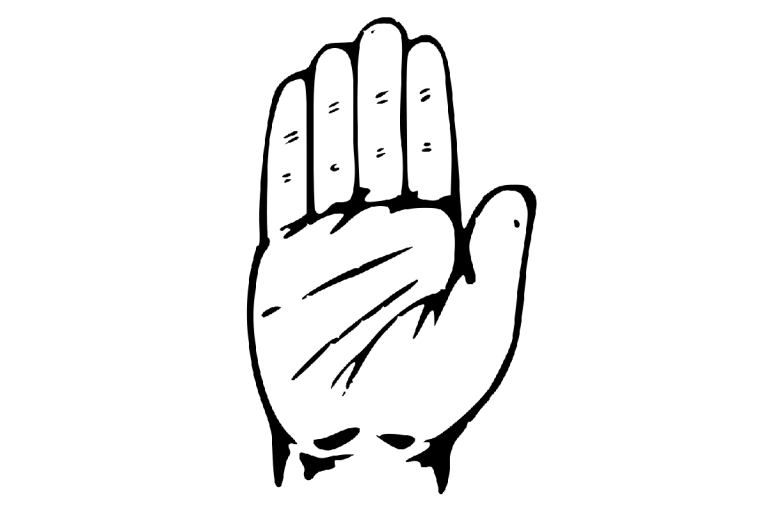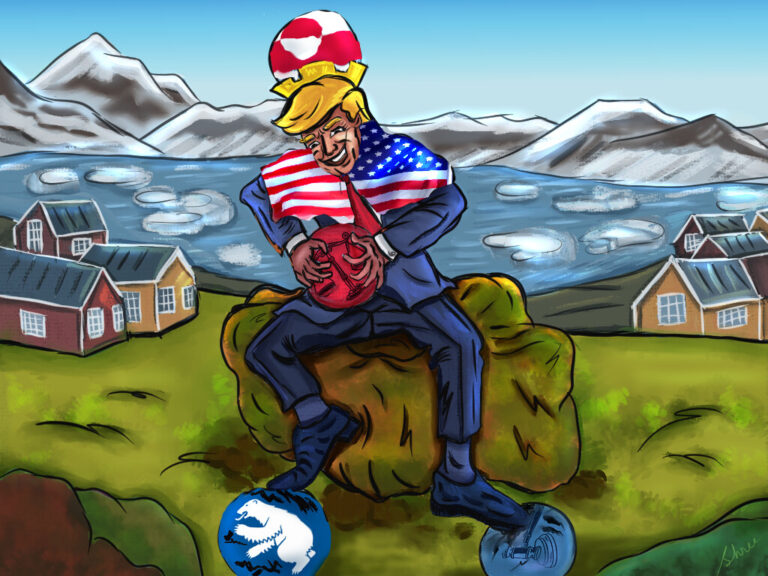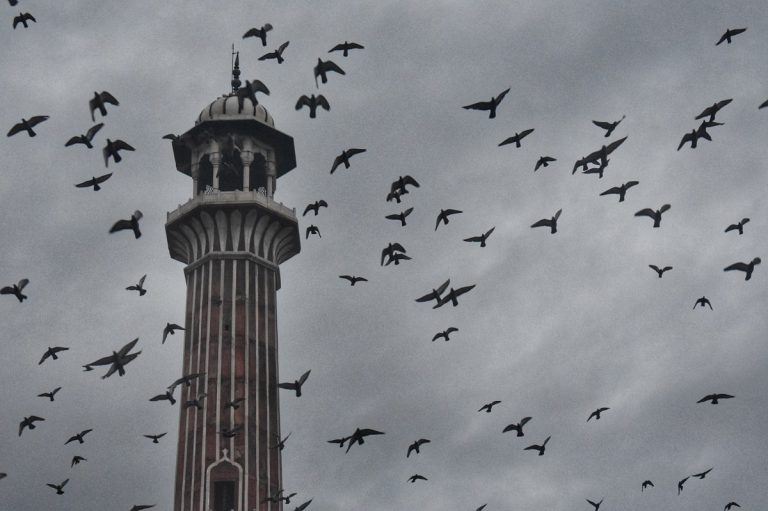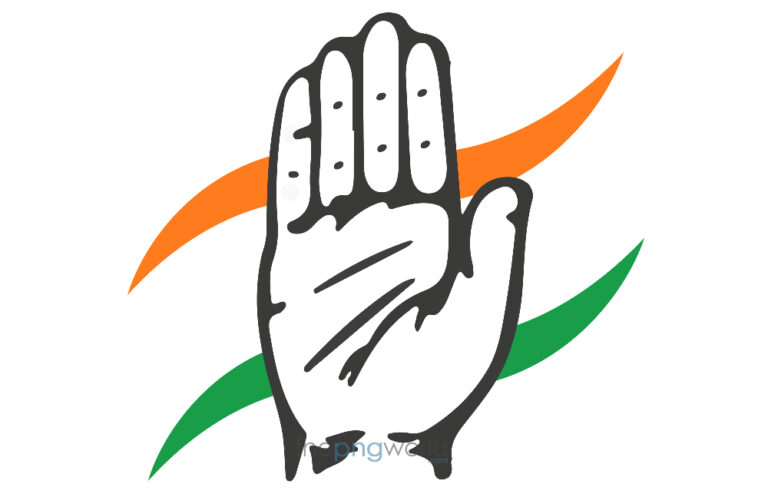Welfare in India: Business, BJP and Middle Class – 2

Chaitanya loves birds, memes, and politics. He is currently studying Political Science and Environmental Studies at Ashoka University. His academic interests include wildlife conservation, environmental governance, welfare politics and agrarian studies.
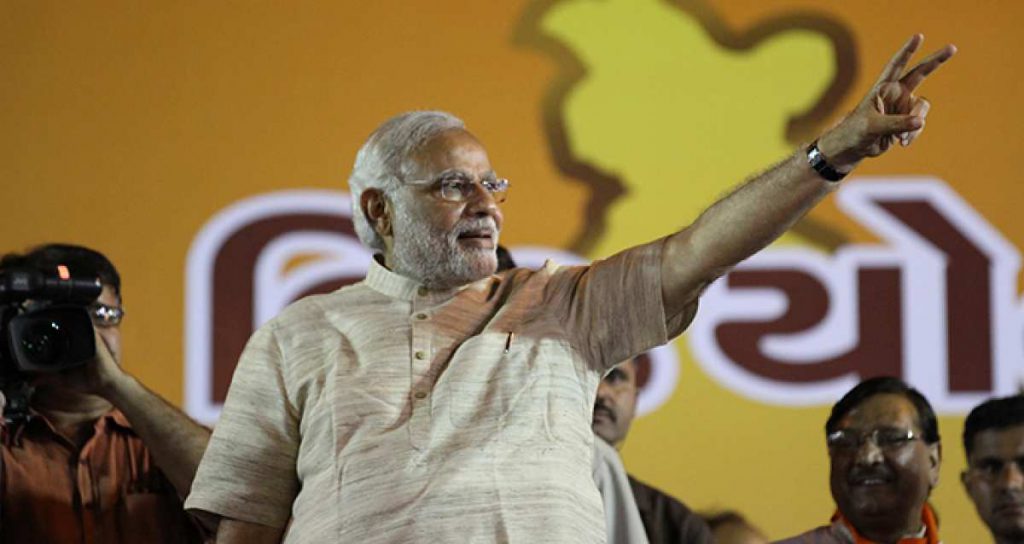
[responsivevoice_button voice=”US English Male” buttontext=”Read out this Theel for me”]
This article has been published in two parts. Do read the first part here
The Modi formula was all about correcting the mistakes committed by the UPA government. The BJP quite differed from the Congress, in its approach to economic policy. As Milan Vaishnav puts it, with Modi coming to power, India has seen a dramatic upending of the social basis of politics and has traded its socialist, autarkic model for a more market-based approach.[1] This change in approach also impacted the way welfare policies were framed and implemented. The primary focus of welfare measures was no more providing the poorest of the poor with basic necessities. Building infrastructure and skills among people started to be considered an important part of welfare. This can be clearly seen in the implementation of various welfare policies by the BJP Government.
Swachh Bharat Abhiyan (SBA):
Since 2014, more than 100 million toilets were constructed under this scheme, but no efforts were made to spread awareness, and not much was invested in ensuring running water supply and waste disposal.[2] In the annual budget of 2020, 12,300 crores were allotted to the SBA. Out of this, only 3.6 crores was allotted to the Jal Jeevan Mission aimed at providing water supply to every citizen.[3] In the absence of a stable water supply and a waste disposal facility, the physical construction of toilets would not be functional. The government went ahead and declared India ‘Open-Defecation Free’ on October 2, 2019, but several leaders criticized it. The SBM had surely facilitated the construction of an enormous number of toilets that were never done by any government before but failed to achieve the goal of turning India clean.
Jan Dhan Yojana (JDY):
Another such case of redefining welfare is the JDY. About 38.35 crore bank accounts were opened under this scheme, mostly by farmers, agricultural laborers, urban workers, and small business owners.[4] But there are several issues that this scheme did not address. A large portion of the accounts are inactive because people did not have enough money savings or did not trust banks. While account holders were provided with digital banking and overdraft facilities, not many were aware of them.[5] No measures were taken to improve financial and digital literacy. Not more than 1 percent of JDY account holders utilized the overdraft and loan facilities. Poor infrastructure of banks in rural areas was another problem.[6] While this scheme definitely helped increase the number of people who held bank accounts, it did not achieve the financial inclusion it aimed at.
Mahatma Gandhi National Rural Employment Guarantee Act (MGNREGA):
The MGNREGA scheme, introduced in 2005 under the Mahatma Gandhi National Rural Employment Guarantee Act, promises unskilled manual work to every adult for at least 100 days in rural India. It was effectively the first act in India that provided a legal guarantee for employment. Work taken up under the scheme includes natural resource management projects such as irrigation, land development, water conservation, and the like. The BJP had criticized the MGNREGA even before they came to power. When the BJP came to power with an overwhelming majority in May 2014, Prime Minister Narendra Modi, like many other senior BJP leaders, believed that the job guarantee scheme was the wrong way to utilize funds for the poor. Modi even took a not-so-subtle dig at UPA in his address at the 2015 Budget session: “This is a living monument to your failure to tackle poverty in 60 years. With song and dance and drumbeat, I will continue with the scheme.”[7] They believed that if the state invests in infrastructure, it would promote economic activity, which would, in turn, provide jobs and income for the rural poor.
BJP MPs were uncomfortable with the PM’s criticism of the job guarantee scheme because they felt only pro-rich economists had opposed it. Besides, it is one of the few programmes of the central government that reached the farthest corners of the country. The only other programme equally familiar in rural areas is the Pradhan Mantri Grameen Sadak Yojana. They felt that the government needs to reform the scheme and not scrap it.[8] Political pressures from the BJP’s local units, as well as the pathetic economic condition of rural India due to drought, forced the BJP to revert to the scheme.[9] Despite the BJP’s ideological differences with the Congress over the approach to employment generation, it has made the highest-ever budgetary allocations to MGNREGA, with 550 billion Rs. allocated to the scheme for FY19, up from 480 billion in the previous year. The preceding three years witnessed the NDA increase budgetary allocation towards it.[10]
But, one major difference lies in the way the funds are being allocated under this scheme. Under UPA rule, the focus of this scheme was on generating employment and providing a living wage for landless rural labourer household areas. The BJP government has altered the focus of this scheme towards target-driven asset-creation in villages. The Ministry of Rural development would earmark funds to help backward areas hire experts to supervise natural resource management and the quality of assets. Certain set targets need to be reached by every block in order to receive additional funds. Monitoring of the assets created under this scheme and training rural youth to do this monitoring was also an important reform.[11] This sort of ‘asset fetishism’ has tilted the benefits of MGNREGA in favor of agriculturists and landed farmers. The assets created under this scheme, such as canals, roads, and soak pits are only useful for farmers who own land. This is another example of how the BJP panders to the middle classes.
Garib Kalyan Rojgar Yojna:
The recent COVID-induced lockdown has caused thousands of urban migrant workers to lose their jobs, forcing them to move back to their home villages where they do not have any form of livelihood left. The Prime Minister launched Garib Kalyan Rojgar Yojna to tackle this unemployment problem.[12] It is specifically focused on ‘shramik’ workers who have returned to their villages due to the COVID pandemic, in a total of 116 districts across six states in India. The employment provided would help to build panchayat offices and Anganwadi centers, and assist national highway expansion projects, railway works, and water conservation projects. Special focus was given to laying of optic fiber cables to ensure faster internet connectivity in villages. This scheme was criticized by opposition leaders as superficial, anti-poor, and a tactic to woo voters ahead of the state elections in Bihar. Several activists have suggested the full utilization of MGNREGA instead of announcing new diluted policies.[13] The Garib Kalyan Rojgar Yojna is a perfect example of how the BJP utilizes welfare schemes in a way that benefits corporate expansion. Works such as water conservation, highway expansion, and laying optical fibers benefits the large farmers, industries, internet companies, and urban dwellers than it benefits the rural poor and unemployed. This shifting focus of welfare schemes from poverty alleviation to delivery of goods and services is a clear manifestation of a neoliberal turn in welfare policy in India.
Other Policies:
Under the UJALA scheme, more than 36 crore LED bulbs have been distributed to households across India.[14] The Sahaj Bijli Har Ghar Yojana (SAUBHAGYA) and Deen Dayal Upadhyay Grameen Vidyutikaran Yojana (DDUGJY) were launched to ensure electric connections to every household in India. By the end of 2019, the government has declared India to be 100 percent electrified.[15] Although all the criteria for electrification were met, questions about quality, stability, and last-mile connectivity remain.[16]
With the launch of Ayushman Bharat, the Modi government took a significant step towards engineering an architectural shift in India’s welfare system, away from direct provisioning (government running hospitals and schools) towards financing citizens through income support and health insurance and regulating private providers.[17] This is a very clear case of the government transferring its responsibility to private players.
Revisiting the Puzzle
Looking at the implementation of these welfare schemes suggests that the BJP government has altered these schemes to suit their neoliberal agenda. Assets and skills built through MGNREGA will be useful for investment in rural areas. This would make the middle classes happy as their taxes are being used for productive activities. The creation of physical infrastructure in rural areas appeals more to the urban middle class since they cannot know what is happening on the ground. So, numbers matter the most. The way JDY, SBA, SAUBHAGYA, and DDUGJY function, they are aimed at increasing the number of toilets, bank accounts, and electrified households. This way, they can appeal to the altruistic conscience of the middle class by showing that the BJP is doing good for the poor. Ayushman Bharat shows India’s shift towards privatisation of albeit state-run essential services.
This gives us a good answer to the puzzle. The BJP manages to run and maintain pro-poor welfare schemes while also furthering its pro-business and MGMG agenda because they have tailored their welfare schemes in a way that would appeal to the middle classes and proponents of neoliberalism. By shifting the aim of welfare schemes from poverty-alleviation to resource-creation, they have made welfare schemes a tool to improve enterprise, creating a unique form of neoliberal welfarism. While whether this form of welfare is good or bad for India is debatable, it surely creates an interesting balance between welfarism and liberalism. This is a very important topic to study since the contours of welfare have been gradually changing as India becomes more and more liberalized, privatized, and globalized.
References:
- Vaishnav, Milan. “Transforming State Capacity in India.” Carnegie Endowment for International Peace, July 2 2019, https://carnegieendowment.org/2019/07/02/transforming-state-capacity-in-india-pub-79411
- Raval, Gargi. “110 Million Toilets Built, But Claim That India Free Of Open Defecation Not True.” FactChecker, 2 Oct. 2019, www.factchecker.in/110-million-toilets-built-but-claim-that-india-free-of-open-defecation-not-true.
- Upadhyay, Aishwarya. “From ODF Plus To Waste Management, Experts Explain What Union Budget 2020 Means For The Swachh Bharat Abhiyan.” NDTV-Dettol Banega Swasth Swachh India, February 1 2020, https://swachhindia.ndtv.com/from-odf-plus-to-waste-management-experts-explain-what-union-budget-2020-means-for-the-swachh-bharat-abhiyan-41365/
- “Pradhan Mantri Jan – Dhan Yojana (All Figures in Crore) Beneficiaries as on 29/04/2020.” Pradhan Mantri Jan Dhan Yojana (PMJDY), 2020, https://pmjdy.gov.in/account
- “Reserve Bank of India – Annual Report.” Reserve Bank of India, August 29 2018, www.rbi.org.in/Scripts/AnnualReportPublications.aspx?Id=1231.
- Abraham, Neha. “Financial Inclusion Low Despite 356 Mn Jan Dhan Accounts.” FactChecker, 16 Aug. 2019, www.factchecker.in/financial-inclusion-low-despite-356-mn-jan-dhan-accounts.
- ET Online. “Budget 2019: How Modi Fine-Tuned MGNREGA and Made It Better.” The Economic Times, July 3 2019, https://economictimes.indiatimes.com/news/economy/policy/rural-jobs-in-jaitley-years-how-modi-fine-tuned-mgnrega-and-made-it-better/articleshow/70020138.cms?from=mdr
- Mathew, Liz. “Why the BJP Embraced MGNREGA, the Living Monument of the UPA’s Failures.” The Indian Express, February 3 2016, https://indianexpress.com/article/explained/why-the-bjp-embraced-mgnrega-the-living-monument-of-the-upas-failures/
- Mukherjee, Sanjeeb. “10 Years of MGNREGA: How the Modi Government Was Forced to Adopt the Scheme.” Business Standard, February 3 2016, www.business-standard.com/article/opinion/10-years-of-mgnrega-how-the-modi-government-was-forced-to-adopt-the-scheme-116020200266_1.html.
- Krishna, Ujjwal. “NREGA: How Political Will Impacted Implementation.” The Financial Express, June 5 2019, www.financialexpress.com/opinion/nrega-how-political-will-impacted-implementation/1598304.
- Sharma, Nidhi. “MGNREGA Focus on Asset Quality, Skilling Now.” The Economic Times, March 2. 2020, economictimes.indiatimes.com/news/politics-and-nation/mgnrega-focus-on-asset-quality-skilling-now/articleshow/74433019.cms?from=mdr
- https://timesofindia.indiatimes.com/business/india-business/pm-narendra-modi-launches-garib-kalyan-rojgar-abhiyaan-key-points/articleshow/76477176.cms
- https://www.thehindu.com/opinion/op-ed/utilise-mgnrega-to-the-fullest-capacity/article31957319.ece
- NATIONAL UJALA DASHBOARD | EESL. www.ujala.gov.in Accessed May 12 2020.
- SAUBHAGYA DASHBOARD.” Sahaj Bijli Har Ghar Yojana – SAUBHAGYA, 2020, https://saubhagya.gov.in/
- Bhaskar, Utpal. “All Villages Electrified, but Last-Mile Supply a Challenge.” Livemint, December 29. 2019, www.livemint.com/industry/energy/all-villages-electrified-but-last-mile-supply-a-challenge-11577642738875.html.
- Aiyar, Yamini. “Welfare Policy and Modi 2.0.” The Indian Express, June 8 2019, https://indianexpress.com/article/opinion/columns/narendra-modi-2-0-modi-welfare-policies-bjp-government-5770220/
Featured Image Credits: Wikimedia


